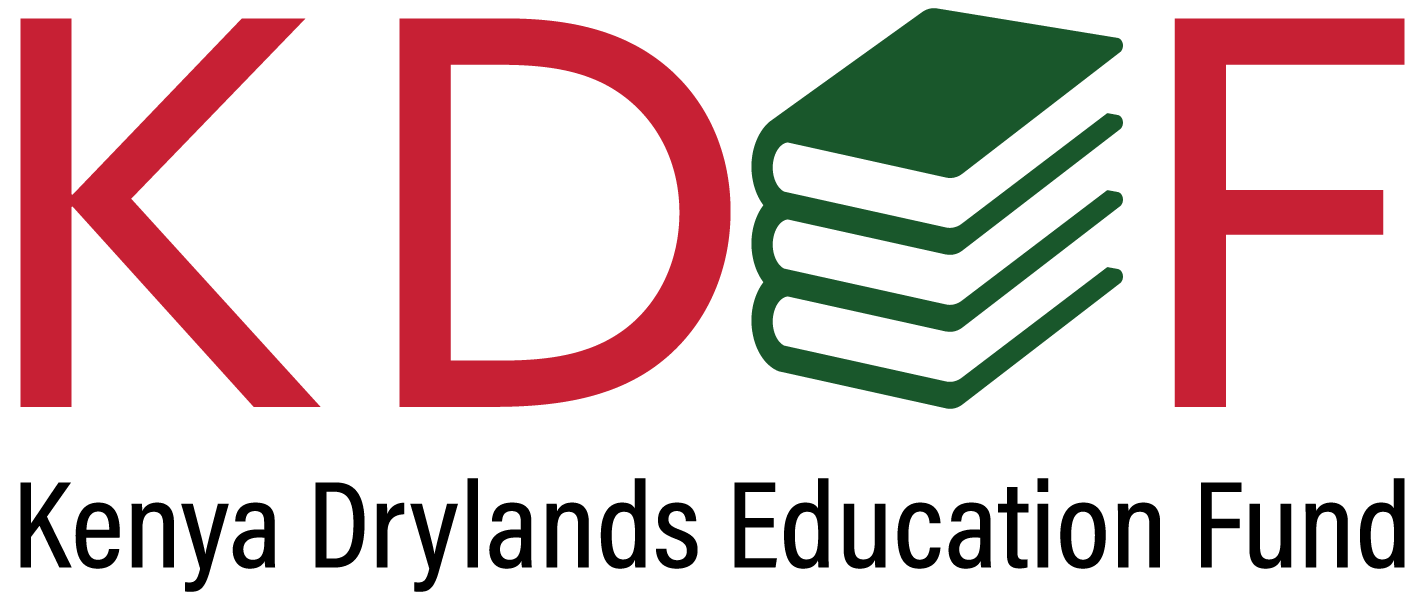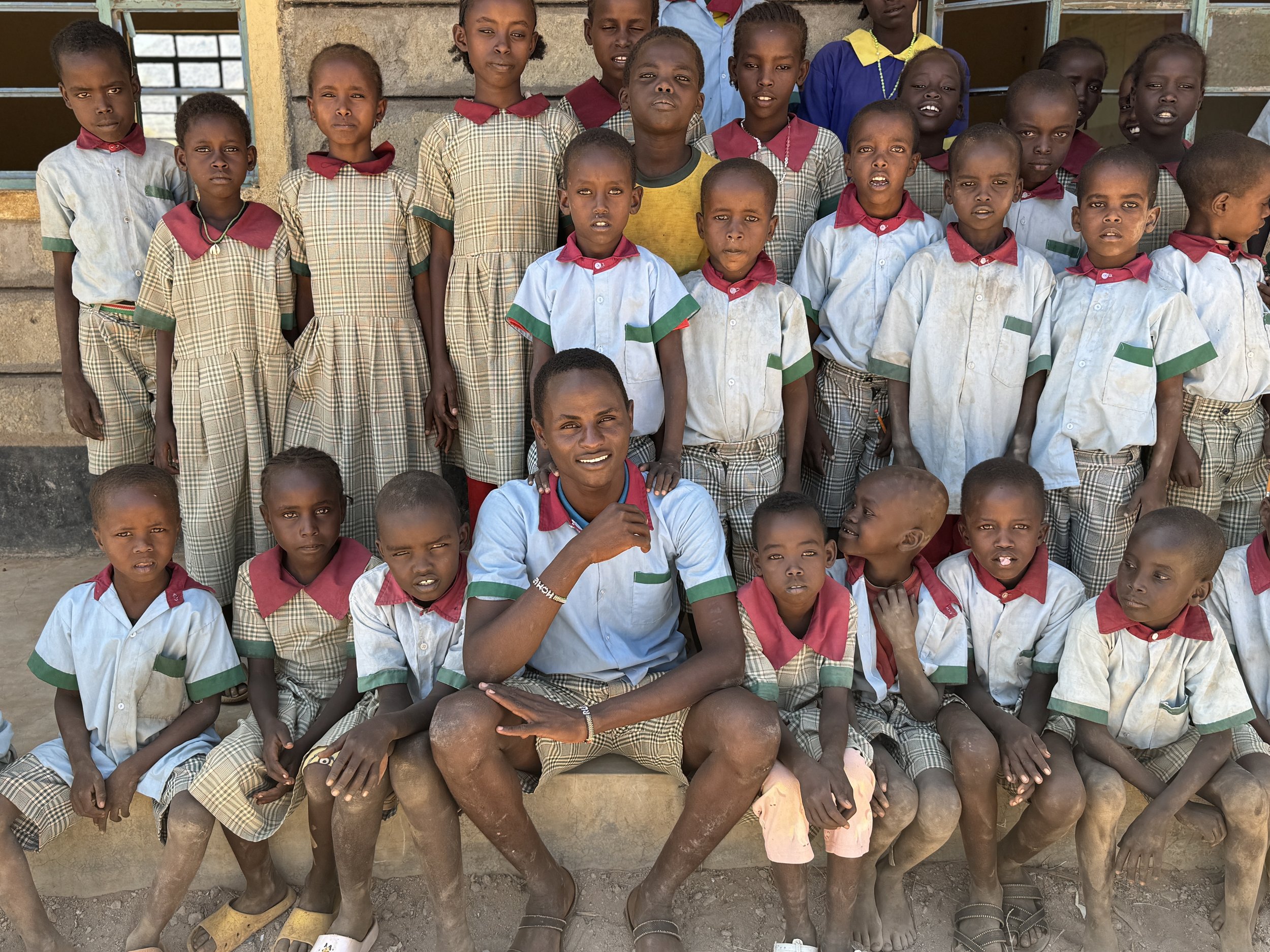From Pastoralist to Pioneer: Simon’s Story of Resilience and Education in Samburu
Poi Primary School Students, Siangan, Kenya
In Northern Kenya in a remote part of Samburu County sits the small village of Siangan. Nestled at the base of Poi Mountain and surrounded by the Ndotto mountain range, Siangan is home to about 200 Samburu households. Known as the “butterfly people” for their vibrant beads and colorful attire, the Samburu are a proud community that have long depended on herding camels, goats and cows for their livelihood. Not only do these animals provide food, income, and dowries, but they also play a central role in celebrations. As a result, many families prioritize their children’s work with the herds to find pasture and water over their children’s education.
Both the tradition of pastoralism and the lack of educational opportunities have contributed to an almost 100% illiteracy rate in the village. As climate change makes this way of life increasingly unsustainable, many now see education as the way forward, but with the nearest school 10 kilometers away, the people of Siangan face difficult choices. They can allow their children to make the long daily walk to and from school, risking encounters with elephants, snakes and other wildlife; send them to live with distant relatives or even strangers; or keep them home without an education. Most choose the last option.
For years this community sought solutions but was met with empty promises and neglect. Kenya Drylands Education Fund (KDEF), a Kenya NGO and U.S. nonprofit, believes that every child deserves a chance, that education is a right, not a privilege, and that no one should be forgotten because of a remote living environment. KDEF listened to the people’s desire for education and the opportunities it provides, and in 2021 built and equipped a primary school for the Siangan Community. Poi Primary School was born.
Poi Primary School holds a special place in my heart—it was the first school that KDEF built from the ground up. Today the school is fully registered with the government and includes three classrooms, teacher housing, a kitchen, sanitation facilities, administration offices, and perimeter fencing. It is important to note that when KDEF completes a project—whether it is a borehole, classroom, dormitory, science center, or an entire school—that project is handed over to the community and becomes theirs. However, KDEF often continues to offer support, particularly to newly established schools and institutions like Poi.
Simon and a few of his Grade 3 classmates.
It was on one of KDEF’s follow-up visits to Poi two years ago that I observed a first-grade classroom filled with happy, excited students, one of whom was Simon Lepir. Simon was not your typical first grader and, currently, not your typical third grader. Simon is 18 years old and entered first grade at the age of 16. I was curious to learn more about this young man, who seemed genuinely happy to be sitting in class among six-year-olds, squeezed into a small chair at a tiny desk.
I asked if I could spend some time with Simon to hear his story. Since he speaks Samburu and I speak English, we would need an interpreter. A KDEF employee named Lmarandi, a member of the local community, was the perfect choice for the job.
On a hot, dusty October morning, Lmarandi and I set out to Poi Primary School. Our plan was to visit Simon’s home first and then interview him back at school. Ready and waiting, Simon greeted us with a warm smile and was clearly excited to see us. I wasn’t sure if he had ever ridden in a vehicle before, but he climbed right in, and we were soon on our way to his home a short distance away.
Simon, his mother and younger siblings at home.
Simon’s home is set in a breathtaking location, right at the base of the iconic Poi Mountain, easily recognizable by its resemblance to a giant loaf of bread. We entered the boma, a fenced area made from sticks that encircled the compound, and were welcomed by his mother, whom Simon closely resembles, and two young siblings. Inside were four dome-shaped structures made from sticks, which served as homes for Simon and his family and as a safe enclosure for their livestock. We were given a tour of Simon’s and his mother’s homes, neither of which had electricity or running water—cooking was done over open fires inside the homes. Although their existence was a simple one, my observation was the family is healthy and lives a meaningful life.
Several years ago, Simon had gone through the traditional Samburu circumcision ceremony, marking his initiation as a Moran. For the next 15 years, this role would require him to live apart from his family, joining other Morans to herd livestock and survive independently in the bush.
During a recent drought that lasted over three years, Simon journeyed long distances with his livestock in search of sustenance. Once while breaking branches from a tree to feed his cows, he fell and broke his leg. He often went without food for up to five days, coming close to death. After enduring these hardships, Simon eventually returned home defeated after all his livestock perished in the drought.
Weak and discouraged, Simon spoke to his family about his path forward and suggested the idea of going to school. Though his parents were illiterate, they knew of relatives working in medicine and education, and the thought of education brought hope. Still, they were concerned, as was Simon, that he was too old to begin school. How could he possibly start first grade at the age of 16? What would the other Morans think? And what about the young children in his class?
In truth, the other Morans thought he was “mad,” but Simon did not let that stop him and followed his heart. He cut his hair, washed out the red ochre—the dye Morans use to color their hair—put on the school uniform and went to school. Simon was now officially a first-grade student at Poi Primary School.
Before leaving Simon’s home, we thanked his mother, said our goodbyes, and headed back to Poi Primary to continue our interview. Simon shared the story of his first day at school. It was challenging—he didn’t understand anything, and the younger children teased him, unable to grasp why someone his age couldn’t write or keep within the lines on his composition paper. But Simon’s desire to learn kept him going, his sole focus on gaining knowledge. Today he proudly shows his assessment book, sharing that he is the best writer in the school and the top student in his class.
Simon proudly shares his assessment book and his achievement of becoming the top student in his class!
Simon has unexpectedly become a local hero, inspiring other Morans to attend school. He shared that he can now write his name and is able to teach others to do the same. So far, he has encouraged three other Morans to pursue education, and his father has enrolled two more of his younger siblings at Poi Primary School. His father believes that education will lead his children to success and that one day they will return to support him.
When asked if building the new school close to his home was the reason he enrolled, Simon replied “no” because he had already decided he would get an education. However, he shared that being part of this community and knowing the children and their families helped him overcome his initial fears.
Simon dreams of becoming a nurse or a doctor, hoping to bring essential healthcare and resources to his community where so many suffer from lack of medical support. In his region, there is currently only one doctor for 60,000 people.
Poi Primary School’s talking wall and some of the school’s 86 students.
I left Simon that day feeling proud of a young man who, despite his challenging circumstances, chooses the harder and less popular path—a path I am certain will bring this humble, hardworking and determined individual closer to achieving his dreams.
Poi Primary is a developing school. At present, there are three classrooms with one additional classroom needed to be added each year as the students progress to ninth grade. Additionally, Poi is part of KDEF’s School Feeding Program that provides hot, nutritious lunches daily. KDEF seeks ongoing funding to keep students like Simon and his classmates in school; building a classroom costs $15,000, while funding the daily lunch program for the school’s 86 students for one year costs $2,580.
Kenya Drylands Education Fund (KDEF) continues to improve access to educational opportunities in the arid regions of Kenya. In the drylands of Kenya, education remains a critical challenge. Cultural norms, economic restraints and limited educational infrastructure contribute to a cycle of inequality.
KDEF is a U.S. 501(c)(3) nonprofit, EIN #46-1992106, and a registered Kenyan NGO. All donations are tax-deductible.
Sarah Hadden, is the Cofounding Executive Director of Kenya Drylands Education Fund.
“Education is the key to unlocking the world. It is the passport to freedom.”





